How to propagate a money tree?
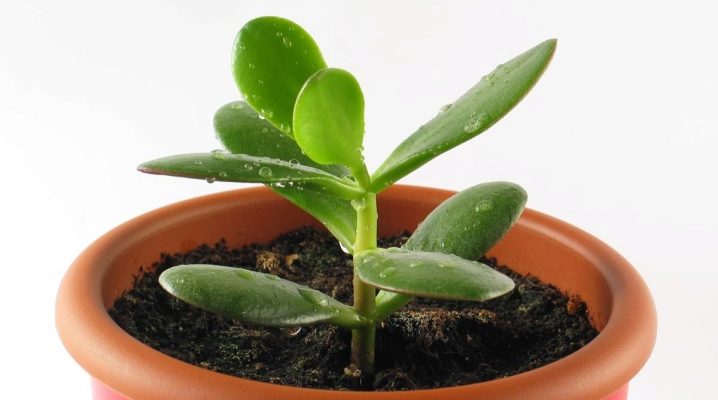
An indoor plant with the interesting name "money tree" has become very popular lately. To a large extent, this was facilitated by the opinion that a self-planted and grown plant will bring prosperity and prosperity to the house.
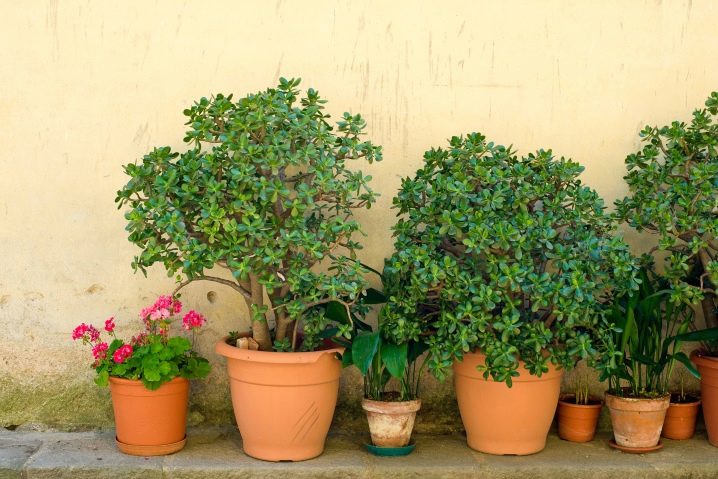
Peculiarities
Crassula (Crassula) is a plant of the Crassula family, widespread in southern latitudes, especially in South Africa. This perennial evergreen plant looks like a small tree with a thick but short trunk and a lush crown. In a young plant, the trunk has a green color, and in an adult, a thin gray bark appears.
Rounded thick flat leaves are very reminiscent of coins, hence another name - money tree. The size of dark green smooth leaves is about 4–7 cm. They densely cover numerous shoots.
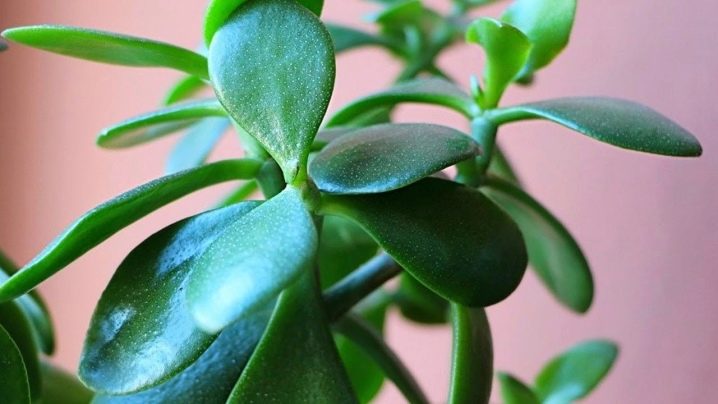
Breeding and growing this unpretentious plant does not require much effort, given some of the nuances in caring for it.
- Crassula reacts negatively to excessive moisture, which leads to rot in the roots. Signs of waterlogging are leaves falling or the appearance of brown spots on them. Watering should be done only with settled water.
- The fat woman requires good lighting and grows successfully on windows facing east and west. However, it should not be exposed to direct sunlight. Therefore, in the summer, at a particularly hot time, it must be shaded. And in winter, it must be kept in the most illuminated places and the bowl must be turned periodically.
- The fat woman does not grow well in heavy soil. The most suitable for her is a universal soil or a specialized (for succulents) substrate.
- Requires the formation of a crown, this contributes to the active growth of the green mass.
- The plant does not like frequent feeding. Fertilization should not be more frequent than once every few weeks. In winter, you don't need to fertilize it at all.
- Frequent reproduction and transplantation can cause harm to the plant, as the bastard has a long adaptation period.
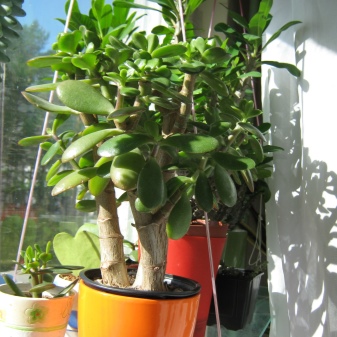
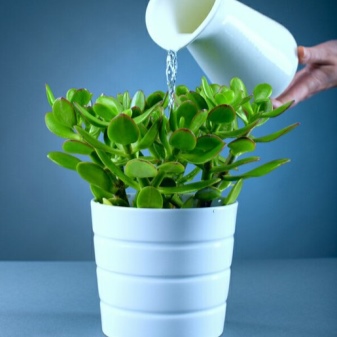
There are several ways to plant a flower. But first, preliminary preparation is required.
Preparation
Preparation for reproduction and further cultivation of the money tree consists in two points - choosing the right bowl and preparing the necessary soil. It is best to use an earthenware pot or ceramic bowl, but a plastic bowl is also acceptable. A prerequisite is that the flower pot must have drainage holes.
The size of the pot is also important: it must be small, otherwise the young shoot or cuttings will actively develop roots to the detriment of the stem and crown. As a result of their weakening, the fat woman will not grow branched, or the crown will grow in one direction.
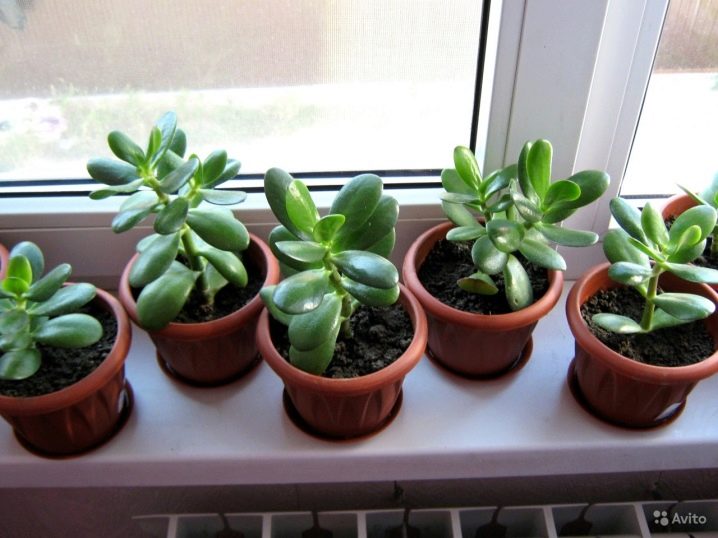
The best option is to use a low but wide container, the depth of which should be about 10 cm and the diameter - 20 cm. Over time, the root system will take up the entire pot, and then the flower will need to be transplanted into a larger pot.
The preparation of the required soil is also important. Nutritious garden soil is not suitable for a money tree. You can use special prepared soil, but it is also possible to prepare it yourself.
Soil for crassula is prepared from the following components: leaf soil, peat and sand (preferably large) - 1 part each, sod soil - 3 parts and mineral fertilizers - 1 g per liter of soil. Ready complex mineral fertilizers can be replaced with ash or crushed coal.
Drainage (expanded clay or small stones) is placed at the bottom of the pot, and then the pot is filled with the prepared mixture.


Reproduction methods
You can propagate a fat woman in several ways:
- plant seeds;
- plant rooted cuttings (cuttings);
- root the leaves.
Seeds
You can propagate the fat woman by seeds. This method of breeding a money tree is long and requires a lot of work. Most often, it is used by breeders to breed new species, since it allows you to grow many seedlings at once. At home, it is rarely used, since it is extremely difficult to get seeds due to the rare flowering of a fat woman when grown indoors.

Step-by-step instructions will help you to correctly implement this method.
- The container intended for planting seeds must first be treated with a solution. Drainage is placed on the bottom, and a soil mixture is placed on top, which is lightly watered.
- Then the seeds are sown and slightly deepened into the soil.
- The container is placed in a bright room where the temperature is maintained from +20 to +25 degrees.
- The container is covered with polyethylene (glass).
- Watering is carried out every day with settled water using a spray bottle, and the seedlings are aired for about an hour. As a result of airing, the soil dries out a little and is filled with air. Then the seeds are closed again.
- The film can be removed after germination, after about two to three weeks. Seedlings must be protected from direct sunlight.
- Watering continues for about a month, until the seedlings grow up and get stronger.
- Then they are seated in a larger container. The gap between shoots should be at least 1 cm. After the formation of 2-3 young leaves, the seedlings dive again.
- The seedlings that have grown to 6-7 cm are planted in separate small bowls with a diameter of about 5-7 cm.
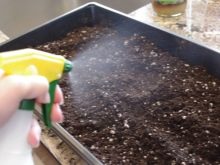
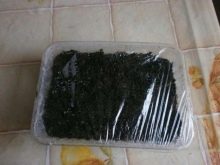
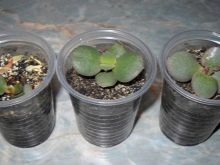
Subsequent care should be the same as for an adult plant, but the soil should be kept moist and kept at a temperature of at least +18 degrees.
Sheets
Breeding crassula from a leaf is another way of its reproduction. It is not difficult, however, a long process. The roots grow rather quickly, but the formation of new shoots takes a long time. Also, not all leaves can take root.
The choice of leaf is of great importance in this method of propagation. Not every leaf can be cut. First of all, you cannot take an old or yellow leaf, as it can simply dry out. A very young leaf is also not suitable, since it is not yet fully developed. It is best to cut off only the elastic leaves that are in the middle of the branch and have a fairly large size and rich green color for rooting.
It happens that the leaves form aerial roots. Their use gives good results, since all cut leaves are rooted and in a short time. The selected leaves should not have yellow spots and signs of decay. When cutting, you need to use a sharp tool, and make an oblique cut.
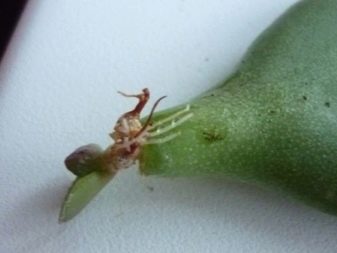
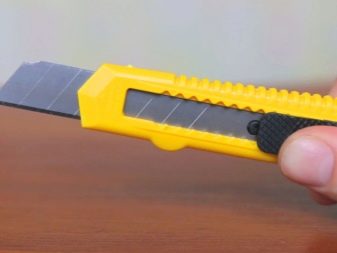
Further, such actions are carried out.
- The cut sheet is dipped into a small container with boiled and cooled water. The base of the leaf should be submerged in water for about half a centimeter. Instead of water, you can use a growth promoter.
- The water in the container is changed after 3-4 days.
- The leaf is kept in water until roots sprout.
- Further, it can be planted in a small bowl of potting soil. The leaf should not be immersed deeply in the ground: the soil should cover only the roots. The soil near the leaf is compacted.
- Then the sheet is covered with a film or jar. The shelter must be opened daily for ventilation. After the appearance of a new sprout, the shelter is removed.
- Watering should be done with settled water no more than 2 times in 7 days and avoid waterlogging.
- After about a month, the leaf will take root and begin to grow actively.
You can also root the leaves in the ground. In this case, they are preliminarily dried for 1-2 days, and then placed on a moistened soil surface so that the base of the sheet is in contact with the ground or placed along the perimeter of the container, resting on the walls. With this method, the leaves quickly form roots, which themselves will go into the ground.

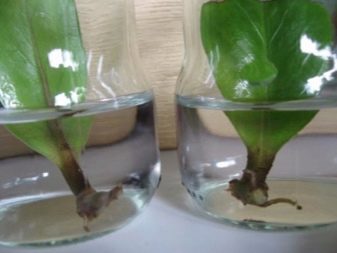
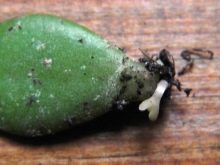

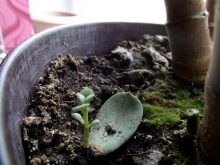
Cuttings
Cutting is another simple method of breeding a fat woman at home. Therefore, it is used much more often than other methods. When using it, you can quickly grow a young, but already quite large money tree.
The material for cuttings can be shoots cut in the spring during the formation of the crown. You can also take a scion for the cutting and throughout the year. However, rooting occurs quickly only in spring and summer. In the autumn-winter period, this process can last for a long time - from 3 to 6 weeks.
For cuttings, only powerful and well-developed shoots are selected. Elongated or weak branches are not suitable for cuttings. It is better to choose vertically growing branches so that the future adult plant has a beautiful shape. The cutting should be 5–10 cm long and have at least 3 nodes and 3 pairs of leaves.
You can cut the cuttings both from the top and from the stem, and make a cut near the node: roots will form from it. Cutting does not require the use of drugs that stimulate root growth. In order for grafting to be successful, you need to follow simple rules:
- the selected cuttings must be completely healthy, with no signs of rot, dry spots or damage;
- for a safety net, cut off 2-3 cuttings;
- the upper and processes from the stem inherit all the properties of the mother plant;
- for cutting, you need to use a very sharp tool and make an oblique cut;
- you can take shoots only from an adult flower, which is at least 3 years old.
Rooting of cuttings can be done in 2 ways - in water and in soil.
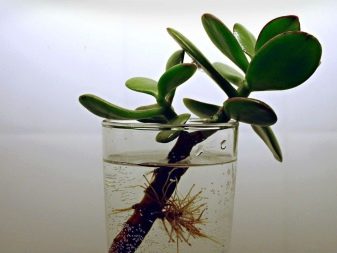
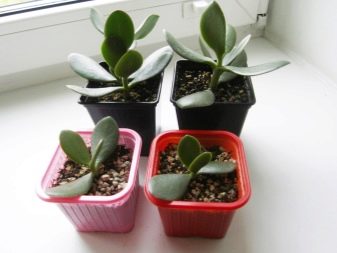
Rooting in water is carried out as follows.
- Previously, the lowest leaves are removed from the cuttings: young roots will grow instead.
- Then the cuttings are placed in a glass container - a glass, a jar - with boiled and cooled water. The container is pre-poured with boiling water for disinfection. It is not recommended to take tap water, as it promotes decay of the cuttings. Activated carbon can be added to the water (1 tablet).
- The container with the handle is placed in a warm and bright room. The temperature is maintained within + 23-25 degrees. At lower temperatures, there is a risk of rotting of the appendages.
- The cutting should not be exposed to direct sunlight.
- The water needs to be changed periodically to fresh.
- The rooting process can take 10-14 days or several weeks depending on the season.
- Cuttings can be transplanted into the soil after the roots have reached a length of about 2 cm.
Rooting cuttings in the substrate consists of such actions.
- Pre-prepare the cutting: sprinkle the cut with charcoal powder and air dry for about 24 hours.
- Place drainage on the bottom of a small container in a layer one third of its volume. Then cover it with potting soil without compacting it. The mixture can consist of garden soil and sand, taken in equal proportions.
- Further, having made a hole in the middle of the container (about 4 cm), lower the stalk into it.
- Slightly compact and moisten the soil using a spray bottle.
- In the future, you need to water as needed and only with settled water.
- After 2-3 weeks, the cutting will give roots.
In the same way, a shoot is planted in the soil after rooting the cuttings in water.
You can transplant a young fat woman into a larger pot after 6 months.Instead of a self-prepared potting mix, it is also possible to use a special prepared soil for cacti or succulents. Cuttings do not require greenhouse conditions for germination, so they do not need to be covered.
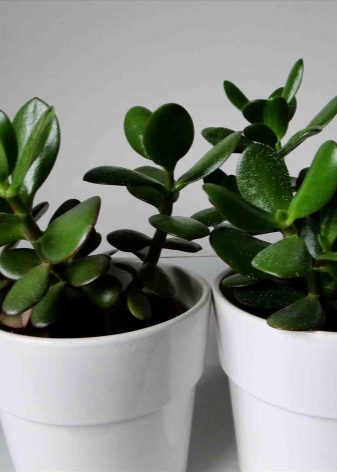

Follow-up care
Germinating a shoot and planting it in the ground is the initial stage of growing a money tree. To grow a healthy and beautiful plant, you need to properly care for it. Competent care involves following these rules.
- Watering should be done only after the top layer of the earth dries up by about 3-4 cm. It is advisable to water often, not abundantly, with warm water. The water should not stagnate in the pan: it should be poured out 30 minutes after watering. In summer, watering is enough after 5 or 7 days, and in winter, watering is reduced to 2-3 times a month.
- Containers for growing a fat woman should be appropriate for its size. For her, low, but wide containers are better suited, contributing to the active development of surface roots.
- It is recommended to fertilize Crassula once a month in the spring-summer period, and no additional feeding is required in winter. You can apply mineral fertilizers to succulents.
- Only a young money tree (up to 4 years of age) is recommended to be replanted every year. In the future, it is necessary to transplant only if necessary: if the plant's roots have sprouted through the drainage holes. In an adult plant, it is only necessary to replace the top of the soil with a fresh one every year.
- Crassula needs regular crown formation - the removal of too long processes. The first time pinching is done after the formation of 4 leaves: the bud between the leaves is removed. As a result, two (and maybe more) new buds will form here. If one is formed, then it is pinched again.
- The plant requires good lighting, but direct sunlight should not fall on it. In winter, with a lack of lighting, additional illumination with a phytolamp is required.
- It is also important to ventilate the room to provide fresh air for the plant. In summer, it is useful to put the crassula on the street (balcony, terrace), but not in direct sunlight.
- If dust is found on the leaves of the tree, wipe them with a damp cloth or spray with water from a spray bottle. It is useful to wash it under the shower, covering the pot with plastic to protect the soil from excess moisture.
- The soil in the bowl must be loosened regularly so that the air they need reaches the roots.
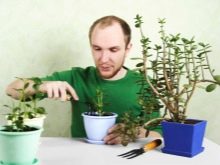

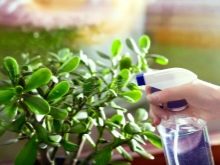
Possible problems
In the process of multiplying the money tree, problems sometimes arise that can be easily eliminated. The most common complications are manifested in this way.
- During the rooting of the shoots, the foliage begins to turn yellow - this indicates the beginning of decay of the roots. The reason is excess moisture. If grafting is carried out in water, then the shoot must be taken out and dried again (1-2 days), and when rooting in the substrate, watering must be reduced and watered only when the soil is dry.
- When rooting the cuttings in the soil, the leaves may dry out and fall off. This indicates insufficient soil moisture, which means you need to water the plant.
- The appearance of dark spots on the leaves of the process indicates the presence of an infection of fungal origin. It is the result of too much moisture in the soil and air. In this case, it is necessary to reduce the watering of the plant and more often to air it. For prevention, it is recommended to spray it with a fungicide.
- Leaves or cuttings can keep roots out for a long time. Root growth retardation in the spring-summer period may occur due to low temperatures or lack of light. The shoots should be placed in a lighter place and the temperature regime of their content should be increased. If these measures do not give results, then you can resort to the use of growth stimulants.
- The leaves of cuttings or young shoots are spotted.These are signs of an incipient fungal or bacterial infection. Treatment is carried out with special means by spraying the crown and watering the soil under the bastard.
- In the cuttings, the lower area becomes dark and soft, which means that rotting has begun. In this case, you need to cut off the rotten part of the cutting, grabbing some healthy tissue, dry it again and put it in water. For prevention purposes, a fungicide can be added to the water.
- Sometimes there is a change in the shape of the trunk, which manifests itself in its uneven thickening, or it deviates from the vertical and grows at an angle. This comes from a lack of light, which means it is necessary to provide the flower with sufficient lighting.
Adhering to these rules of reproduction, cultivation and care recommendations, you can successfully grow a money tree - a symbol of prosperity and success.
For information on how to propagate a money tree, see the next video.























































The comment was sent successfully.